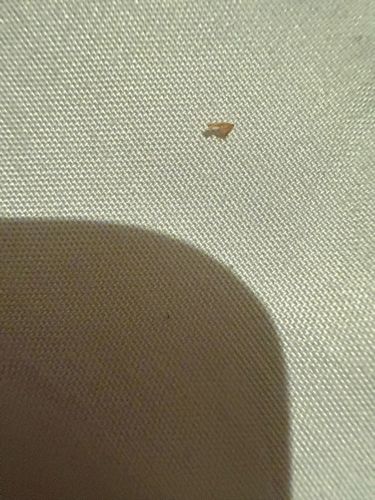Bed Bug
Scientific Name: Cimex lectularius
Order & Family: Hemiptera (order), Cimicidae (family)
Size: 4-5 mm (adults); nymphs are smaller

Natural Habitat
Dwellings, especially bedrooms (beds, mattresses, box springs, bed frames, headboards); also crevices in walls, furniture, and luggage.
Diet & Feeding
Strictly hematophagous, feeding on the blood of humans and other warm-blooded animals.
Behavior Patterns
Nocturnal feeders, hiding in dark, secluded spots during the day. They are attracted to carbon dioxide and body heat. Bed bugs crawl rather than fly or jump. They can go long periods without feeding.
Risks & Benefits
Potential risks: Painful, itchy bites; allergic reactions; secondary skin infections from scratching. They are not known to transmit diseases to humans. No known benefits to humans or the ecosystem.
Identified on: 11/3/2025